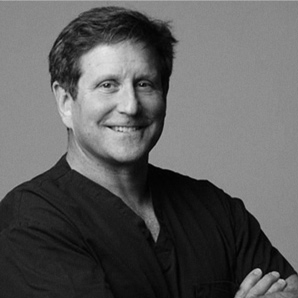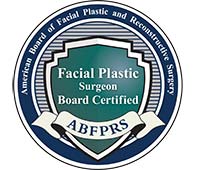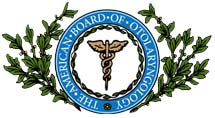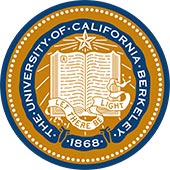When medical therapy does not provide sufficient relief, when the suffering individual is significantly frustrated, when month after month goes by and the problem persists, when antibiotic resistance becomes more of a concern due to repeated regimens, it is time for Endoscopic Sinus Surgery. In the majority of instances of chronic sinusitis refractory to medical treatment, endoscopic sinus surgery provides significant relief.

Despite medial treatment, prolonged symptoms and suffering is common. Medical treatment is often not capable of providing sufficient relief. The term “chronic sinusitis” means that the nasal sinuses are inflamed on a “chronic” basis. It is not called “temporary” sinusitis for a reason. Thus, the goals with treatment are to provide as great a level of relief as possible, understanding that in most instances, cure is a long shot.
The prolonged frustration with chronic sinusitis is well experienced by millions of people in the US, and for these individuals, endoscopic sinus surgery has proven to be a game changer. Endoscopic sinus surgery provides removal of any polyps, opening of a closed nasal air passage, and most importantly, relief of the obstruction of the narrow or closed sinuses. When the sinuses are opened, the passage of mucus, infection, or any stagnant debris can be better delivered from the sinus to the nose and pass from the aero-digestive tract. Also, endoscopic sinus surgery attempts to decrease the inflammation, mucositis, loss of mucociliary function, and osteitis that occurs in the paranasal sinus regions that has manifested due to the ongoing and persistent sinus obstruction, inflammation, and infections. There is an overall desire to restore normal nasal passage function, proper nasal airway, and mucociliary function which is needed for proper delivery and auto-cleaning of the sinuses and nasal cavity.
Endoscopic sinus surgery is performed under general anesthesia. During the procedure the endoscope is critical in providing meticulous evaluation and location of the areas of concern. It is placed within the nasal cavity, for visualization of the nasal cavity and the communicating sinuses. Stereotactic guidance (simultaneous video screen view of instrument positioning within the nasal and sinus cavities) is also used and is additionally extremely helpful. With this combination of endoscope, and video stereotactic guide, the precision of surgery is significantly enhanced. Commonly, a micro debriding instrument is employed as well and aids in precisely removing obstructing tissue, swollen mucosa, or obstructing polyps. Essentially, the microdebrider trims obstructing tissue, which opens the sinuses doorways. Also, any obstruction due to a deviated (cartilaginous and boney central) septum is corrected. And, prominent turbinate membranes are trimmed or reduced as needed. Thus, the inflamed and obstructed nasal sinuses are corrected via opening of the nasal cavity, opening of the sinuses, and reduction of redundant swollen turbinate membranes.
The overall goal is to reduce the symptoms of chronic sinusitis, particularly the problematic headache and paranasal sinus pressure and pain. In the majority of instances, patients achieve improvement of their overall symptoms and improvement in their quality of life. The nagging sinusitis symptoms that lead to a particular feeling of malaise and illness, is reduced. Only after the surgery, do patients better appreciate what it feels like to have normal nasal and sinus function. Importantly, medical treatment is provided after sinus surgery to reduce the likelihood of the return of problematic sinusitis.
There are numerous studies that articulate the benefit of endoscopic sinus surgery for chronic sinusitis, including those patients with or without nasal polyposis. Approximately 15% to 20% of individuals will require repeat sinus surgery and this is particularly true for individuals who have extensive polyps, bronchial asthma, aspirin intolerance, or cystic fibrosis. A specific individualized approach for chronic sinusitis is required for all individuals due to the multi-factorial aspect of chronic rhinosinusitis. Both medical and surgical treatments are the mainstay of therapy and generally provide satisfactory improvement in the majority of individuals.
A Few Reasons to Choose Facial Beauty
Low Risk Procedures
Every procedure requires some for of anesthesia and traditionally this is a General Anesthesia, meaning you are completely knocked out. At Facial Beauty, we utilize cutting-edge local anesthesia procedures where you are not fully knocked out but completely comfortable. The advantage of Local Anesthesia that there are less complications & faster recovery time. Our procedures generally take from an hour and thirty minutes to no more than three hours, allowing us to dramatically reduce any risk involved in the procedure.


Limited Downtime
Simple & Affordable Financing
At Facial Beauty, we offer low monthly payment plans and pre-qualifications for any additional treatments, affordability has never been easier. If you’ve ever let financing stand in your way of a new you, come talk to us about options you may not know you had. We can even do pre-approvals over the phone so please feel free to call us anytime.


David Santos MD, FACS
Dr David Santos was the Medical Director for Lifestyle Lift, responsible for hundreds of facelift surgeons and thousands of procedures. Having performed over 4,000 facelift procedures himself, Dr. Santos is committed to finding cutting edge techniques to reduce the risk and minimize the downtime of facelift procedures.
- Member American Board of Facial Plastic and Reconstructive Surgery
- Member American Board of Otolarnyngology – Head and Neck Surgery
- Member American Academy of Facial Plastic and Reconstructive Surgery







